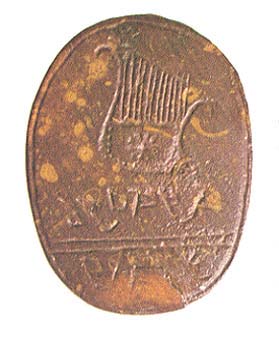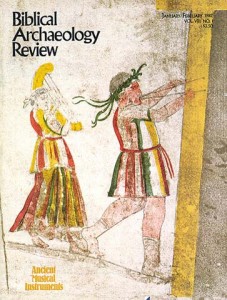What Did David’s Lyre Look Like?
A delicate jasper seal may tell us

“The spirit of Yahweh had forsaken Saul, and at times an evil spirit from Yahweh would seize him suddenly. His servants said to him, ‘You see, sir, how an evil spirit from God seizes you; why do you not command your servants here to go and find some man who can play the harp? Then, when an evil spirit from God comes on you, he can play and you will recover.’
“Saul said to his servants, ‘Find me a man who can play well and bring him to me.’
“One of his attendants said, ‘I have seen a son of Jesse of Bethlehem who can play. He is a brave man and a good fighter, wise in speech and handsome, and Yahweh is with him.’
“Saul therefore sent messengers to Jesse and asked him to send him his son David …
“And whenever a spirit from God came upon Saul, David would take his harp and play on it, so that Saul found relief; he recovered and the evil spirit left him alone.”(1 Samuel 16:14–23)
The Hebrew word here translated “harp” is kinnor. Although the word is customarily translated “harp,” even in modern Bible translations, the latest scholarship suggests that the word should be translated as “lyre.”a
But what did this lyre look like? Were there really such instruments so long ago?
Already a library member? Log in here.
Institution user? Log in with your IP address.

